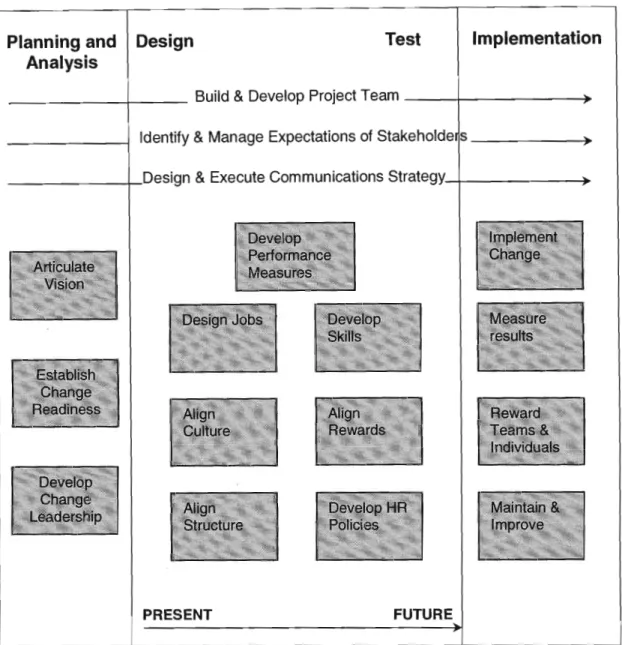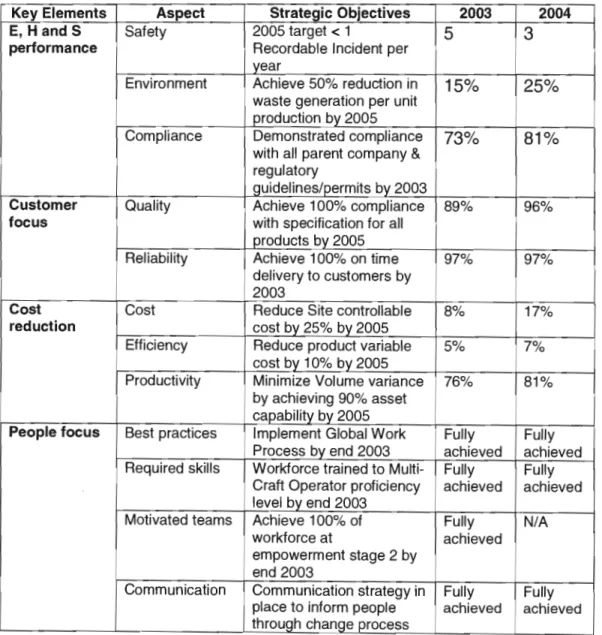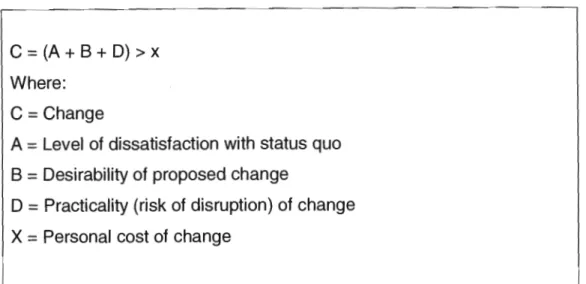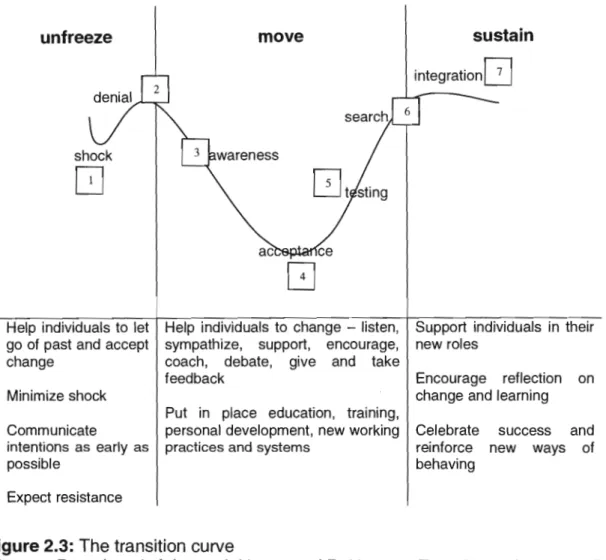In light of this, the dissertation at hand is an assessment of the change process at Dow Agrochemicals (KwaZulu Natal) and the impact it has on the strategic objectives of the organization. The empirical survey is compared with the literature survey to assess the change process in the organization.
Introduction
- What is change management?
- Then nature of organizational change
- Dealing with organizational culture
- Managing the change process and barriers to change
- Change implementation
- Managing transition
- Leading change: Why transformation efforts fail
The correct speed for change must be determined based on the culture of the organization and the size of the step change required. It changes the attitude towards change and contributes to a shared vision for the future of the organization.
Motivation
Value
The change process at Dow Agrochemicals (KwaZulu Natal) will be evaluated to determine whether it is appropriate (suitable and acceptable) for the organization, taking into account the nature of the organization. Is strategic change being successfully achieved at Dow Agrochemicals (KwaZulu Natal) and what impact is the change having on achieving the company's strategic objectives.
Objectives
D Participant observation - will be carried out to first perceive what the participants experience in the environment. D Data Collection - Data will be collected in the areas of safety, quality and service, production and cost.
Limitations
Structure of the research
An evaluation of the information in the fourth chapter against the "model" chosen in the second chapter will be carried out. In addition, the company will be given recommendations for the way forward and recommendations for future research will be made.
Summary
This includes the history of the organization, the products/services it offers, the operations, the state of the company before the change, the strategic goals of the company and the change process.
LITERATURE REVIEW
Introduction
Meaning of change management
The need for change
Types of change
- Planned/proactive change
- Unplanned/reactive change
- Incremental/evolutionary change
- Transformational/radical change
Although it is only superficial but requires a lot of effort to achieve, these changes must be accommodated as they are essential for the survival of the organization. It is seen as necessary either in response to a serious crisis in the organization's affairs or a fundamental change in purpose or strategy and involves challenging all the assumptions underlying existing organizational arrangements.
The change context
- Time
- Scope
- Preservation
- Diversity
- Capability
- Capacity
- Readiness
- Power
Readiness for change has to do with how aware the staff is of the need for change and how willing and motivated they are towards the change. Other issues include whose support should be sought and how much self-esteem the change entity possesses.
DeSigning the transition: The implementation path
- Defining the change vision
- Barriers to change
- Designing the transition state: the organizational level
- Facilitating personal transitions: the individual level
It is related to the identification of the main stakeholders (inside and outside the organization) and the individuals or departments that have power in the organization. Thus, an evaluation of the transition design at Dow Agrochemicals (KwaZulu Natal) would determine whether or not the phases conform to the above theory (thaw, move and maintain).
![Figure 2.1: Dual leadership responsibilities - managing the organizational and individual change paths [8alogun (1999:153)]](https://thumb-ap.123doks.com/thumbv2/pubpdfnet/10642168.0/35.828.119.629.720.911/figure-leadership-responsibilities-managing-organizational-individual-change-8alogun.webp)
DeSigning the transition: levers and mechanisms
- Managing resistance
- Human resource management systems
- Culture change
- Training and development
- Structure as a lever for change
The most important elements are communicating a clear vision of the change and keeping all employees fully informed of any progress. Providing explanations to employees in a sensitive and thorough manner proves to require a positive perception of the intended change. Education and communication - training and continuous training should be provided to employees and managers, and communication of the purpose of the change process using different cases should be applied to change their attitudes.
Building a culture that is suitable for a dynamic and changing market is one of the new challenges facing the organization. Thornhill et al (2000:36) add that organizational structure can act to facilitate or inhibit the achievement of organizational goals. By understanding the structural principles, management can transform their organizations so that change ultimately succeeds.
When an organization's structure proves to be flawed, it can harm both the intended outcomes of the change and the overall goals of the organization.
Managing the transition: monitoring and resourcing
- Monitoring progress
- Change agency
- Middle managers
- Recipients
According to Balogun, transition management is about ensuring that what is planned happens, but also about detecting and managing the unexpected. To be open about how they feel and what they see as barriers to change, those on the receiving end of change may first need to be granted some degree of anonymity before speaking out. For people to provide feedback, there must also be visible action on the feedback, or staff will feel that their managers are not seriously interested in their opinions, so why bother.
However, the more fundamental the transition, the more time-consuming transition management is as a task. Therefore, the larger and more complex the change, the more likely it is that a transition management team will be needed to support the lead change agent(s). This team of additional change agents will need to be a powerful group and therefore either be accepted by the organizational power structure or supported by the CEO for what they do.
In fact, every leader of a team must be a change agent in his own right.
Summary
RESEARCH METHODOLOGy
- Introduction
- Research design
- Sampling
- Qualitative design
- Sources of information
- Measuring instruments
- Evaluation of the measurement tool
- Validity
- Reliability
- Practicality
- Summary
The balance of the information in the case study was gathered from the company profile, previous company records, departmental reports, meetings and presentations. The purpose was to examine the respondents' opinions on certain questions regarding each of the constructs of change and change management. Observation of the behavior of employees, managers and change management in the change environment has also been done to increase the researchers' knowledge of the change process.
Internal validity – is the ability of the research instrument to measure what it is intended to measure. Content validity – of a measurement instrument is the extent to which it provides adequate coverage of the research questions guiding the study. To increase the construct validity of the case study research, data focusing on the constructs under investigation were collected from all stakeholders and the case study was reviewed by some stakeholders.
The external validity for a case study research will involve testing theory and obtaining replication of the findings.
CASE STUDY
- Introduction
- History of the organization
- Products/services provided
- Dow Agrochernicals global performance
- The parent multinational's environment standards
- Dow Agrochemicals (KwaZulu Natal) situation before change
- E, H and S performance
- Customer focus
- Cost reduction
- People focus
- Change at Dow Agrochemicals (KwaZulu Natal)
- Nature of the change process in the organization
- Key success factors
- The model of change
- The path to the future state
- Activities spanning all phases
- Design/testing phase activities
- Implementation phase activities
- Resistance to change
- The company's strategic objectives
- Summary
In the case of a landfill, it recognizes the cost over the useful life of the facility. To belong to one of the leading chemical manufacturers in the world, Dow Agrochemicals (KwaZulu Natal) had to align itself with the standards of the parent company to compete among the world leaders in Agrochemicals. Senior management attempted to communicate the importance of the change to the employees as effectively as possible.
During the analysis and design phase of the change process, some employees and managers tried to block out and object to the control mechanisms introduced in the new system (referred to as block resistance). Some of the employees pretended to accept the change during the analysis and design phases, but showed reverse resistance, i.e. For each of the key elements, strategic objectives were developed, and for each strategic objective, strategic plans were outlined.
Dow Agrochemicals (KwaZulu Natal) adopted a model of change to help leaders identify which aspects of organizational performance should be considered for implementing change and thus gain clarity about the desired future state.

RESULTS
- Introduction
- Response rate
- Descriptive statistics on feedback from questionnaires
- Analysis of data
- Summary
From the above table it can be seen that the average values ranged between disagree and completely agree. Training and development plans are developed to bring employees to the required levels of competence. There is effective management of the new systems that have been implemented as a result of the change.
DISCUSSION OF RESULTS AND EVALUATION OF THE CHANGE
- Introduction
- Planning and analysis
- Communication
- Designing the transition
- Develop performance measures
- Align rewards
- Design jobs
- Develop skills
- Align culture
- Align structure
- Resistance to change
- Managing and leading the change
- Implement change
- Measure results
- Reward teams and individuals
- Maintain and improve
- Impact of the change initiative on attaining the organization's strategic
- Summary
Those who agreed to be involved in the planning were members of the change steering and design teams. During the initial planning of the change process, the employees were not aware that the organization was going to undergo change. The purpose of the change was clearly communicated' had a mean of 3.6 (between unsure and agree, but closer to agree).
Interview respondents mentioned that the change leaders and the leader for Dow Agrochemicals Southern Africa made presentations about the purpose of the. The communication of the change events was done on time' had a mean of 3.35 (between unsure and agree). In the interviews, the middle managers said that the change leaders did not adequately address certain concerns of the employees.
From this it was clear that the employees were not aware of the reward criteria.

CONCLUSION AND RECOMMENDATIONS
Conclusion
The change path followed was 'transformational', as it underwent a fundamental change in purpose or strategy and involved challenging all the taken-for-granted assumptions and 'the way of doing things around here'. This led to changes so profound that after the event the organization is hardly recognizable compared to its previous state (Sadler, 1996:56) Although there were shortcomings in the change process, the evaluation shows that the change leaders successfully drove the change process through the 'planning and analysis', 'design/test' and 'implementation' stages to achieve most of the desired change outcomes.
But there are activities in the implementation phase that need to be improved to successfully take the organization to the future state and maintain it at that level. From the data shown for the years 2003 and 2004 in table 6.1, it is clear that certain objectives are being achieved while some are close to being achieved and others can only be achieved after 2005. Although certain goals can only be achieved after 2005, there is a clear indication from the data that the change initiative had a positive impact on the achievement of the strategic goals.
Recommendations
Communication should not only take place between top management, as is usually the case, but should flow from top management to the lowest-ranking employees. It is essential that communication about change events takes place in a timely manner to avoid creating a sense of unease and distrust among employees. This has resulted in certain employees not being made available to attend the planned training and development sessions.
It is therefore imperative that the planning of the scheduled training and development sessions is managed effectively. There is potential to link such assessment to short-term rewards and recognition in general.
Recommendations for future research
There is effective management of the news systems implemented as a result of the change.

